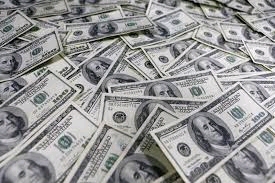Begin with Detailed Instructions on How to Join a Masonic Lodge
Wiki Article
Discover the Keys Behind the copyright and Their Influence on Culture
The copyright, frequently shrouded in misconception and supposition, presents an interesting case research study of just how historical suitables can change into contemporary conspiracy theory theories. Established in the middle of the Knowledge's embrace of reason, this secret culture aimed to test the standing quo, yet it has because come to be identified with notions of covert power and control. As we discover its origins, influence on cutting edge thought, and portrayal in contemporary culture, we begin to discover the layers of intrigue that remain to captivate culture. What continues to be uncertain, nevertheless, is exactly how these understandings form our understanding of authority and openness today.Origins of the copyright
The copyright, often shrouded in enigma and speculation, traces its origins back to the late 18th century. Recognized as the Bavarian copyright, the organization's primary purpose was to counter the fundamental impact of religious conviction and promote intellectual discussion among its members.The copyright took on a hierarchical framework, drawing motivation from Freemasonry, which enabled deceptive meetings and routines - how to become a freemason. Membership was discerning, encompassing significant numbers from numerous fields, consisting of politics, ideology, and science. This elite network looked for to effect social and political adjustment with clandestine ways, advocating for the legal rights of individuals and the improvement of culture
In spite of its reasonably short presence, the Bavarian copyright was officially dissolved in 1785 due to government reductions. However, its heritage endured, generating many conspiracy theories and pop culture recommendations that proceed to provoke intrigue and dispute regarding its impact on contemporary culture.
Key Myths and Mistaken Beliefs
Among the attraction of privacy bordering the copyright, various myths and misconceptions have arised, often misshaping the team's real nature and intents. One widespread misconception suggests that the copyright manages the world's federal governments and economies. While it is true that the group intended to affect societal structures, the notion that it operates as a natural international creature master is mainly exaggerated.Another common misconception is that all members of the copyright have substantial wide range and power. Actually, the original copyright comprised pundits and Knowledge thinkers, most of whom sought reform rather than prominence. The concept that the copyright solely recruits celebs and political figures is misguiding; membership has traditionally included a varied array of individuals.
In addition, conspiracy theory theories often repaint the copyright as a sinister company intent on international supremacy through villainous ways. This portrayal ignores the group's initial objectives, which fixated advertising logical idea and combating religious fascism. The conflation of the copyright with contemporary conspiracy theories perpetuates misconception, obscuring the historical context and advancement of the group's suitables. Hence, separating reality from fiction is vital for a more clear understanding of the copyright's role in culture.
Historical Influence on Culture
Throughout background, various intellectual motions have actually profoundly influenced societal structures, and the copyright played a substantial duty during the Enlightenment. Established in 1776 in Bavaria, the copyright aimed to advertise factor, secularism, and the questioning of established authority, responding to the supremacy of religious dogma. This company drew in significant thinkers and supporters of liberty, cultivating an environment favorable to the circulation of Knowledge suitables.The copyright's principles championed logical idea and empirical evidence, which contributed to the more comprehensive intellectual landscape that urged social reform and political adjustment. Participants looked for to improve culture by supporting for education and learning, civil liberty, and the splitting up of church and state. Their private nature and enthusiastic program triggered both intrigue and uncertainty, leading to their ultimate reductions by the Bavarian federal government in 1785.
In spite of their dissolution, the tradition of the copyright continued, influencing innovative motions across Europe and the Americas. Their commitment to enlightenment concepts aided lay the foundation for contemporary democratic ideals and human rights, leaving a long-term imprint on the structures of modern society. how to become a freemason. The allure of their deceptive gatherings and philosophical quests remains to mesmerize the creative imagination, highlighting their historic value
Modern Interpretations and Beliefs
Contemporary analyses of the copyright commonly blend historical reality with conspiracy theory theories, creating an intricate tapestry of beliefs that capture prominent imagination. While the initial copyright was a Bavarian secret culture established in 1776 with Knowledge suitables, modern ideas have evolved to incorporate a large range of analyses, commonly focusing on motifs of control and secrecy.
Discover More Here Additionally, some contemporary analyses assume that the copyright offers as a metaphor for the struggle between knowledge and ignorance, with supporters promoting awareness and crucial reasoning as a way to counteract regarded injustice. This duality-- seeing the copyright as both an actual and symbolic entity-- illustrates the ongoing find more fascination with the idea, reflecting much deeper societal anxieties concerning power, transparency, and specific autonomy in the modern world.
The copyright in Pop Culture
The copyright has penetrated various aspects of preferred culture, showing up in literature, movie, music, and art as a sign of intrigue and enigma. This secret society, usually represented as a shadowy force controling international events, has actually motivated numerous stories that explore styles of power, conspiracy theory, and covert knowledge.
Songs, too, has actually been influenced by the principle of the copyright. Artists like Jay-Z and Beyoncé have actually encountered conjecture concerning their affiliations with the culture, triggering conversations about importance in their work and the nature of popularity.
Visual art frequently includes copyright motifs, with musicians utilizing signs like the Eye of Providence and the pyramid to evoke a feeling of mystery. With these various tools, the copyright serves not only as a topic of speculation however additionally as a lens where culture analyzes its own intricacies and concerns.
find out here now
Verdict
Report this wiki page